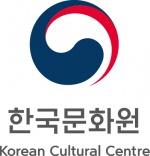Bloomberg New Contemporaries 2016
23 Nov 2016 – 22 Jan 2017
Exhibition opening: Tuesday 22 November 2016, 6.30-9pm.
Performance by Georgia Lucas-Going and drinks from Peroni. Free and open to all, but due to limited capacity please arrive early to avoid disappointment.
Following the opening there will be a DJ set by Haroon Mirza 9-10.30pm in the ICA Bar.
Entry with Day Membership
Showcasing new and recent fine art graduates, Bloomberg New Contemporaries returns to the ICA. The panel of guest selectors comprising Anya Gallaccio, Alan Kane and Haroon Mirza has chosen 46 artists who now join an illustrious roster of New Contemporaries alumni that includes Tacita Dean, Mona Hatoum, Damien Hirst, Mike Nelson and Laure Prouvost amongst many others. In July, New Contemporaries returned to Bluecoat, after 30 years to launch this year’s show as part of the Liverpool Biennial 2016, before it travels to the ICA in November. Bloomberg Philanthropies has supported the New Contemporaries since 2000.
The selected artists for Bloomberg New Contemporaries 2016 are Victoria Adam, Katja Angeli, Diana Anghel, Saelia Aparicio Torinos, James Berrington, Jack Bodimeade, Anna Bunting-Branch, Leah Carless, Michael Cox, David Donald, Jemma Egan, Kate Fahey, Jamie Fitzpatrick, Harry Fletcher, Mary Furniss, Roxman Gatt, Christopher D.A. Gray, Jamie Green, Thomas Greig, Byzantia Harlow, Sebastian Jefford, Seungjo Jeong, Alfie Kungu, Janina Lange, Lana Locke, Georgia Lucas-Going, Sophie Mackfall, Karolina Magnusson-Murray/Leon Platt, Richie Moment, Zarina Muhammad, Richard Nicholson, Mooni Perry, Lisa Porter, Alicia Reyes McNamara, George Ridgway, Rodrigo Red Sandoval, Zsofia Schweger, Leonor Serrano Rivas, Ruth Spencer Jolly, Oriele Steiner, Margreta Stolen, Reece Straw, Maryam Tafakory, Tenant of Culture and Jack West.
See our full BNC 2016 Artists Index
Bloomberg New Contemporaries 2016, brings together artists working across a range of media with traditional techniques and materials used alongside digital applications and processes. Themes in this year’s works include: mass-production, socio-economics, gender equality and cultural identity. The resulting exhibition is both a social commentary and an indication of the emerging generations’ preoccupations.
James Berrington explores social critique through the medium of photography. His still life photographs including Whitburn Orange Multi, (2015) are a response to the current housing crisis in the UK, reflecting Berringtonʼs own experience working in social housing for over 25 years.
In his work Aylesbury, (2015) Michael Cox describes the contemporary landscape of London, a city in constant flux and renewal. In particular, he focuses on council estates on the brink of demolition, places with an architectural frailty, despite being made of materials optimistically used to defy the effects of time (concrete, steel, glass etc). Deliberately omitting the portrayal of people, Coxʼs paintings convey an eerie sense of suspense and emptiness.
Both Kate Fahey and Mary Furniss illustrate the proliferation of the mass-produced digital image, with Fahey engaging with landscape through the possibilities offered by contemporary mass surveillance to create images. Furniss, through her blend of collage, painting, dying and Photoshop explores mass production, distribution, digital technology and sub-cultural aesthetics.
Technology and social media’s effect on human-to-human communications and the potential to help or hinder gender equality is addressed by Ruth Spencer Jolly. We Can Work it Out, (2014) is a rewrite of the familiar Beatles tune of the same name. Spencer Jolly’s version speaks of online arguments and the unconstructive nature of aggressive debates on social media sites.
Identity and memory also play a role in this year’s exhibition with works by Alicia Reyes McNamara addressing the changing identity of the Latino diaspora within the United States, and the fine line between the collective memory of a homeland and personal and cultural mythologies.
In turn, Zsofia Schweger explores notions of home and belonging, local identity, and the emigrant experience. Her first home in Sandorfalva becomes a motif in her paintings to explore memory, time and place.
Georgia Lucas-Goingʼs videos, installations and performances confront how identity and ethics are shaped by socio-economic and cultural disparities. Using humour, Lucas-Going draws from her personal experiences of growing up and living in her hometown of Luton.
New Contemporaries is the leading UK organisation supporting emergent art practice from British art schools. Since 1949 it has consistently provided a critical platform for final year undergraduates, postgraduates and artists one year out of postgraduate study, primarily by means of an annual, nationally touring exhibition. Independent of place and democratic to the core, New Contemporaries is open to all. Participants are selected by a panel comprising influential artists and art figures, often including artists who themselves have previously been a part of New Contemporaries. This rigorous selection process considers the work within a broad cultural context.
The BNC 2016 Catalogue is available in the ICA Bookshop.
Join the conversation with the hashtag #NewContemps.











